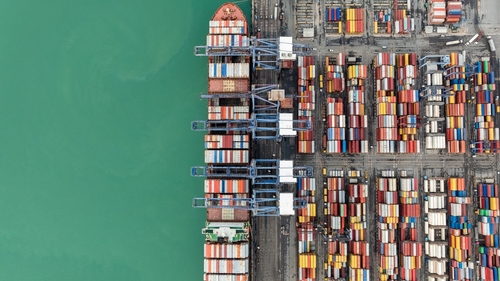Most of us rarely think about where our everyday items come from. Over 90% of global trade travels by sea, making seaports an important but overlooked component of modern life. From the coffee you sip before work to the trainers on your feet, there’s a good chance most of your everyday items passed through a bustling harbour somewhere far away before arriving in your home.
At Remitly, we know how essential these international connections are. Just like sending money home keeps families linked across borders, seaports quietly connect cultures, economies, and daily lives. In this article, we’ll talk about the world’s busiest ports and the role they play in life abroad.
What makes a seaport “busy”?
When you picture a busy port, you might imagine cranes moving non-stop and ships queuing to unload. But in the shipping world, “busy” has a more precise meaning. It’s about how much cargo a port handles, how efficiently it moves, and how well it connects to the rest of the world.
Understanding container throughput (TEUs)
When people talk about how big or busy a port is, they usually measure it in Twenty-foot Equivalent Units (TEUs), which is basically a fancy way of saying shipping containers. Imagine one of those big containers you see on lorries or trains—that’s one TEU.
The Port of Shanghai, the busiest port in the world, moved over 50 million containers or TEUs in 2024.
Different types of ports
Not every port looks the same or handles the same goods. Some are container ports, moving products like food, electronics, or clothes. Others are bulk cargo ports, which focus on raw materials such as oil, gas, or coal. Then there are mixed-use ports, which do a bit of both.
Rotterdam, for instance, is known not just for containers but also for its oil terminals. Antwerp is another example; it’s famous for handling chemicals alongside everyday goods.
Factors behind success
So, why do some ports thrive while others stay small? A lot of it comes down to where they’re located. Ports along busy trade routes, like the Strait of Malacca or the English Channel, naturally see more ships.
Infrastructure is another factor: ports with deep waters, modern cranes, and quick customs checks can load and unload faster. Finally, connections inland also matter. Ports linked to motorways, railways, and airports can move goods quickly to cities and shops.
The world’s busiest container ports
Asia is the epicentre of global shipping. With booming manufacturing industries and favorable geography, Asian ports dominate the rankings year after year.
Port of Shanghai, China
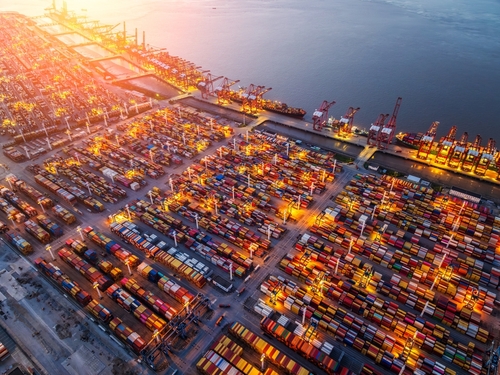
Shanghai’s Yangshan Deep-Water Port is an engineering marvel. Built on islands connected by one of the world’s longest sea bridges, it allows massive vessels to dock regardless of tides. The port is not just top in volume; it’s also known for speed and efficiency.
Port of Singapore
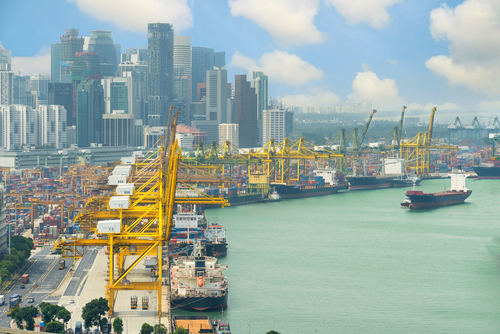
Singapore’s port remains a global benchmark. With limited land, the city-state has invested in automation, driverless vehicles and ferry containers, while AI systems manage traffic flows.
Aside from handling over 40 million TEU in 2024, the port serves as a global fuel hub, supplying ships with bunker fuel. It’s also a cultural crossroads; port workers and sailors from all over the world pass through, making it one of the most international places on earth.
Port of Ningbo-Zhoushan, China
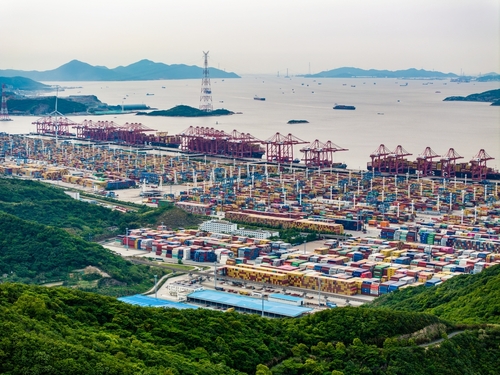
Ningbo-Zhoushan has grown quickly by combining several harbours into a single entity. It specialises in raw materials such as crude oil, iron ore, and coal, making it vital for China’s heavy industries. Its success shows how ports can expand beyond container handling to become full-service gateways.
Port of Shenzhen, China
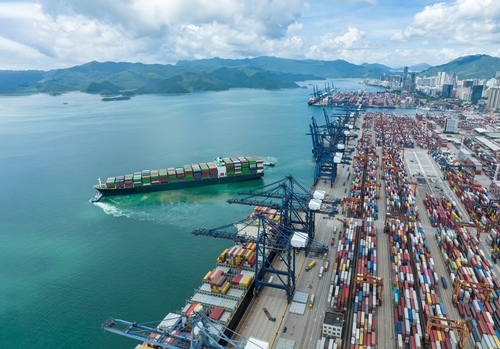
Shenzhen sits in the heart of China’s manufacturing belt. It’s known for exporting electronics, from smartphones to appliances, that end up in households worldwide. The port is split across multiple terminals, each serving different industries, which allows for efficiency at scale.
Port of Guangzhou, China
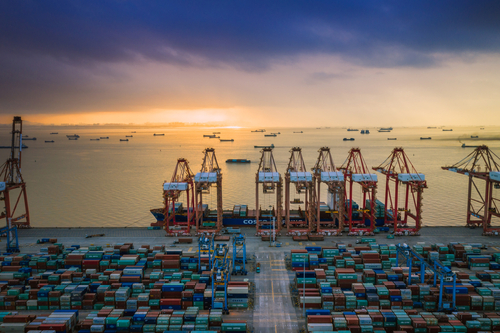
Guangzhou’s history stretches back to the Maritime Silk Road, when it linked China to Africa and the Middle East. Today, it balances tradition with modernity. It’s one of the few ports that can integrate river transport with deep-sea shipping, giving it flexibility that few rivals can match.
Major ports beyond Asia
While Asia leads in container volume, Europe and the Americas are still essential in connecting global trade.
Port of Rotterdam, Netherlands
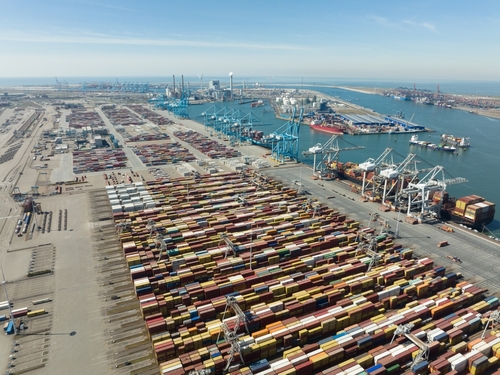
Rotterdam is more than a port; it’s a logistics ecosystem. Its Maasvlakte 2 expansion created new deep-water berths capable of handling the world’s largest container ships. Rotterdam also prides itself on sustainability, experimenting with hydrogen as a marine fuel and aiming to become carbon neutral by 2050.
Port of Los Angeles, USA
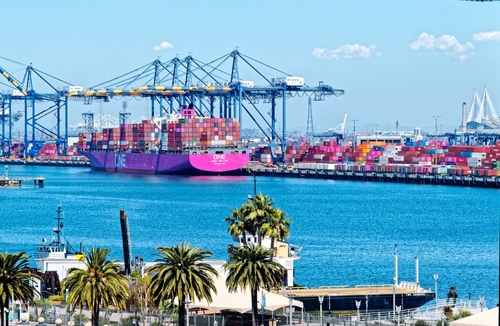
Together with its neighbour Long Beach, the Port of LA forms the busiest port complex in the Americas. About one in every five goods imported into the US comes through here.
During the pandemic, images of ships waiting offshore became a global symbol of supply chain delays. That affected prices for shoppers worldwide.
Port of Hamburg, Germany
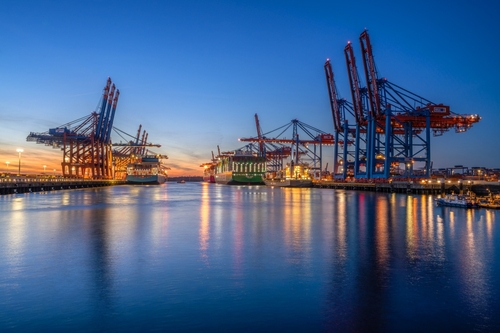
In Germany, Hamburg’s port uses real-time data and sensors to manage cargo and shipping traffic, making it one of Europe’s most high-tech ports. The port has also shaped the city’s culture; the old Speicherstadt warehouse district is now a UNESCO World Heritage site, where history and modern life meet.
Port of Antwerp-Bruges, Belgium
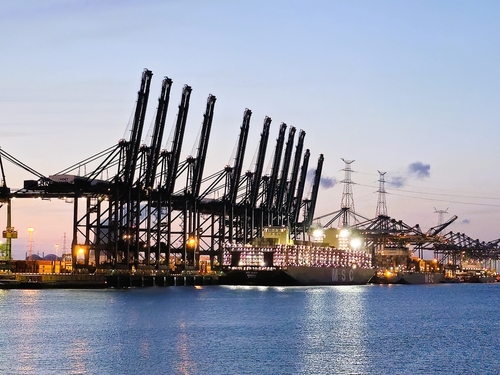
Antwerp recently merged with Zeebrugge to create one of Europe’s biggest ports. It’s known for handling containers, cars, and especially chemicals. In fact, Antwerp is home to one of the world’s largest petrochemical centres, making it essential not only for trade but also for Europe’s industries.
Port of New York and New Jersey, USA

Located on the East Coast, this port is one of the main links between America and Europe. It has gone through major upgrades, including raising the Bayonne Bridge so the biggest ships can pass underneath. Its location next to one of the world’s largest consumer markets makes it an essential hub for international trade.
Port of London (Tilbury Gateway)
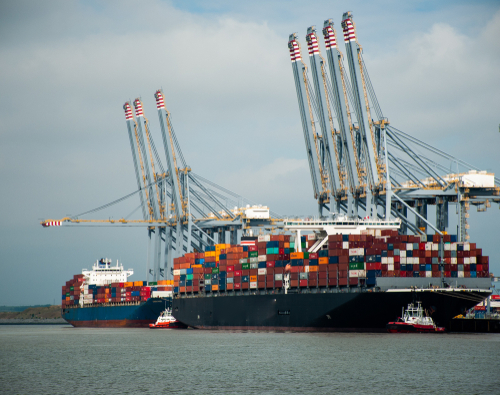
Once the largest port in the world, London’s docks have reinvented themselves for the modern age. Tilbury now focuses on containers, grain, and forest products like paper and timber. It also supports the UK’s push for renewable energy by managing imports of biomass fuels used for power generation.
Emerging maritime powerhouses
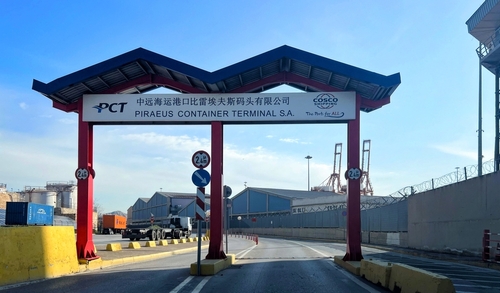
As global trade routes shift, new ports are growing in prominence, adding their part to the modern shipping industry. Here are some of the rising stars of the shipping world:
- Colombo, Sri Lanka: South Asia’s busiest port is strategically positioned on key East–West routes. Its expansion projects aim to make it one of the top 20 ports globally.
- Tanjung Pelepas, Malaysia: Located near Singapore, Tanjung Pelepas is attracting business with lower fees and modern facilities.
- Piraeus, Greece: Since Chinese investment through COSCO, Piraeus has become Europe’s fastest-growing port. It connects Asian goods to the Mediterranean and beyond.
- Jebel Ali, Dubai (UAE): The Middle East’s logistics giant serves as a re-export hub, meaning goods arrive here before being shipped out again to Africa and South Asia. Its free-trade zone makes it especially attractive to businesses.
- Port of Tanger-Med, Morocco: Located at the Strait of Gibraltar, it connects Africa directly to Europe, making it a growing player in both trade and employment.
Modern ports: tech and sustainability
Ports don’t just move goods; they create jobs, shape economies, and even influence the future of global trade.
But the last few years proved how fragile supply chains can be. COVID-19 delays, climate disruptions, and even one giant ship stuck in the Suez Canal showed the world how quickly things can grind to a halt. To bounce back, ports are diversifying suppliers, going digital with customs, and moving from “just-in-time” to “just-in-case” strategies.
The technological shipping revolution
Forget the old image of rusty cranes and endless stacks of containers; today’s ports are basically giant smart cities by the sea. Data and tech play an essential role in making these logistics super-centers more efficient.
Automated cranes can unload massive ships in minutes, while driverless vehicles zoom around terminals. The goal is fewer mistakes, faster deliveries, and a smoother flow of goods. Some ports now have digital twins—basically a video game version of themselves. Operators can test new layouts, predict bottlenecks, and run “what if” scenarios without touching the real thing.
Ever tracked your online shopping order? Ports do the same thing, but on a huge scale. IoT (Internet of Things) sensors follow containers from ship to shelf, while AI predicts traffic jams before they even happen. And blockchain keeps shipping paperwork safe and unhackable.
Environmental measures are also improving every day. From hydrogen fuel trials to electric cranes, ports are finding creative ways to cut emissions while saving money.
The future is green (and a bit icy)
Climate change is reshaping trade in surprising ways. Melting ice may open up Arctic shipping routes, while new infrastructure projects in Africa and South America could shift global patterns.
At the same time, pressure for greener shipping is pushing ports to get creative. Ports are teaming up with shipping lines to cut emissions, which could completely transform how goods move across oceans.
Why seaports matter in everyday life
From London to Hamburg to Rotterdam, port cities have long been magnets for diversity. They’ve welcomed traders, travellers, and immigrants for centuries, shaping multicultural communities that still thrive today.
For immigrants, ports represent a lifeline to their home culture. They bring traditional foods and other goods from home to international supermarkets. Without these gateways, many of the items that bring comfort and cultural connection would be missing from our lives.
FAQ
Which is the world’s busiest seaport by container volume?
Shanghai, with more than 50 million TEUs in 2024.
How do seaports measure their cargo capacity and efficiency?
By container throughput (TEUs), tonnage, and vessel traffic.
What factors determine a seaport’s success and competitiveness?
A port’s success depends on its location on key trade routes, the quality of its infrastructure, and how efficiently it can handle cargo, as well as the strength of its inland connections to rail, road, and distribution networks.
How has COVID-19 affected global seaport operations?
The pandemic caused delays, backlogs, and shortages, showing just how vulnerable supply chains can be and pushing ports to adopt more digital systems and resilient practices.
What role do seaports play in international supply chains?
Seaports act as the main entry and exit points for global goods, shaping what products are available in different countries and how smoothly international trade flows from one region to another.
